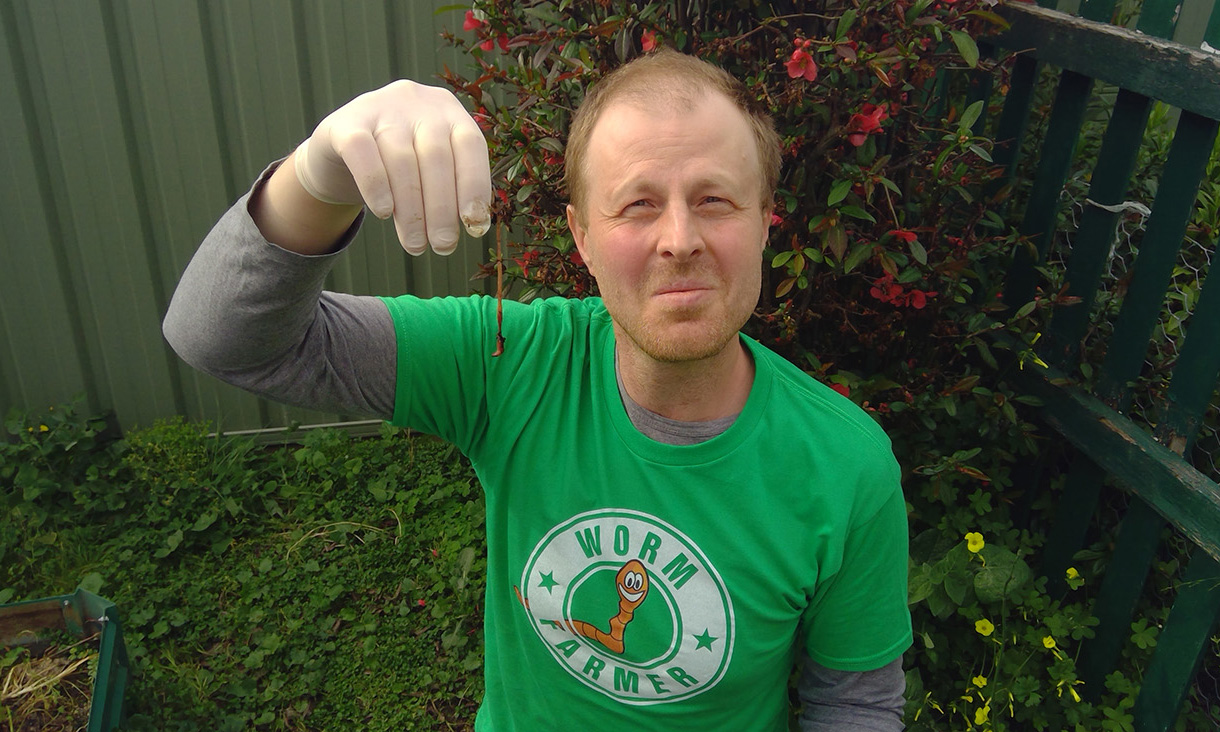Swinburne researchers win global 'IG Nobel' award

Dr Ivan Maksymov's worm research may benefit neuroscience and robotics.
In summary
- Swinburne researchers, Dr Ivan Maksymov and Dr Andrey Pototsky, have been awarded the IG Nobel award in Physics
- Their research, conducted with earthworms, suggests a new approach to creating better machines and robots
- The IG Nobel awards (for improbable research) showcase creative and different approaches to solving serious and complicated problems
Vibrating a slightly intoxicated earthworm on a sub-woofer speaker in a rural Victorian backyard shed – where experiments were conducted because of the COVID situation – has earned Swinburne researchers Dr Ivan Maksymov and Dr Andrey Pototsky the IG Nobel award in Physics.
Their research suggests a new approach to creating better machines and robots.
IG Nobel awards
The worldwide IG Nobel awards (for improbable research) showcase creative and different approaches to solving serious and complicated problems. The name of the award is a pun on the Nobel Prize, which it parodies, and the word ‘ignoble’. They have been run by Harvard University since 1991 and ‘first make people laugh, and then make them think’.
An Australian Research Council Future Fellow in the Optical Sciences Centre, Dr Maksymov is a physicist and is also an associate investigator with the Centre for Nanoscale BioPhotonics (CNBP), while Dr Pototsky is a Senior Lecturer in Applied Mathematics. Their unconventional approach has seen them awarded one of the world’s ten ‘IG Nobel’ awards presented this year.
Their work was inspired by a hypothesis from a Danish scientist that the brain not only functions using nerve-based electric pulses, but also acousto-mechanical (or sound wave) signals.
Some neurobiologists suggested using earthworms for such experiments because they are inexpensive, their axons – or nerve fibres – are somewhat similar to mammalian nerve fibres, and using them does not require ethics approval.
Moreover, Dr Maksymov says: “One can easily anaesthetise a worm using vodka.”

He adds: “When we decided to vibrate earthworms, we did not think of potential applications, because our decision was a pure ‘what-if?’ moment. Later, we started to realise that we did something new and that our results might have several important applications, pushing the frontiers of fundamental knowledge.”
In their experiments the pair observed Faraday ripples on the surface of living earthworms that were sedated using a weak alcohol solution.
“We used a laser to illuminate the worm and a photodetector to collect the reflected light. The intensity of the reflected light was periodically changed due to the ripples on the surface of the worm, which allowed us to investigate their frequency, amplitude and other parameters that physicists usually want to know,” Dr Maksymov says.
“In the case of the earthworms, we observed Faraday ripples because the muscles of a sedated worm are relaxed, but its body, which consists mostly of water, acts as an elongated liquid drop covered by a thin elastic skin.
“Significantly, the earthworms recovered after our experiments and were released into a worm farm.”

Dr Andrey Pototsky collaborated with Dr Maksimov on the IG Nobel prize-winning research.
The results of their experiments were published in the Nature journal, Scientific Reports, and generated international interest through popular science blogs.
As a result of the vibrating worm experiment in the backyard shed, new developments in robotics and mechatronics could be explored.
“Recently, there have been experimental demonstrations of prototypes of soft autonomous robots that move by crawling across surfaces by contracting segments of their body, much like earthworms,” Dr Maksymov adds.
-
Media Enquiries
Related articles
-

- Astronomy
‘Beyond what’s possible’: new JWST observations unearth mysterious ancient galaxies
A paper published in Nature details findings using new data from the James Webb Space Telescope challenges our understanding of how galaxies form.
Thursday 15 February 2024 -

- Science
Quantum research sheds light on the mystery of high-temperature superconductivity
An international team of scientists have made a new discovery that may help to unlock the microscopic mystery of high-temperature superconductivity and address the world’s energy problems.
Thursday 08 February 2024 -

- Technology
- Science
- Sustainability
- Engineering
CSIRO and Swinburne invest in green steel and mineral processing to help industry get to net zero
CSIRO and Swinburne have established a new partnership to tackle global decarbonisation with innovative green steel and mineral processing research and development.
Thursday 01 February 2024 -

- Technology
- University
Innovative approaches to teaching and learning funded by Adobe
A total of 10 diverse projects dedicated to improving the digital literacy of our students have been awarded Adobe Innovation Grants and Curriculum Innovation Program.
Wednesday 31 January 2024 -

- Astronomy
- Science
Dark energy discovery a decade in the making: new supernova insights offer clues to the expansion of the universe
Researchers at Swinburne University of Technology have contributed to a landmark study that complicates our understanding of the universe.
Thursday 11 January 2024

